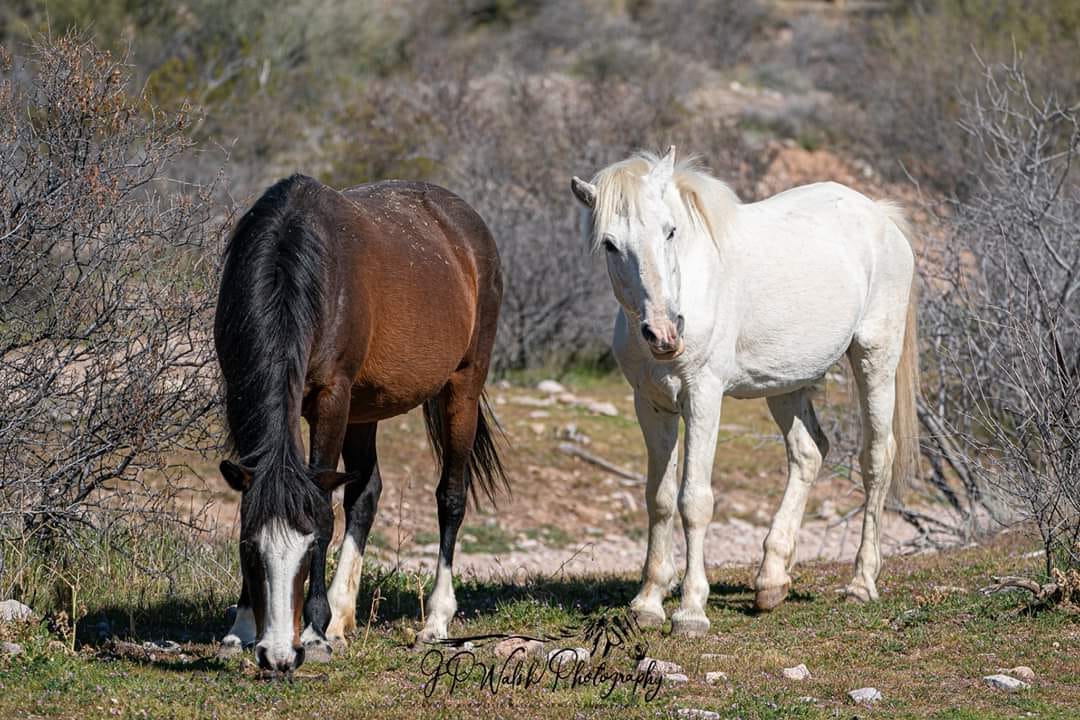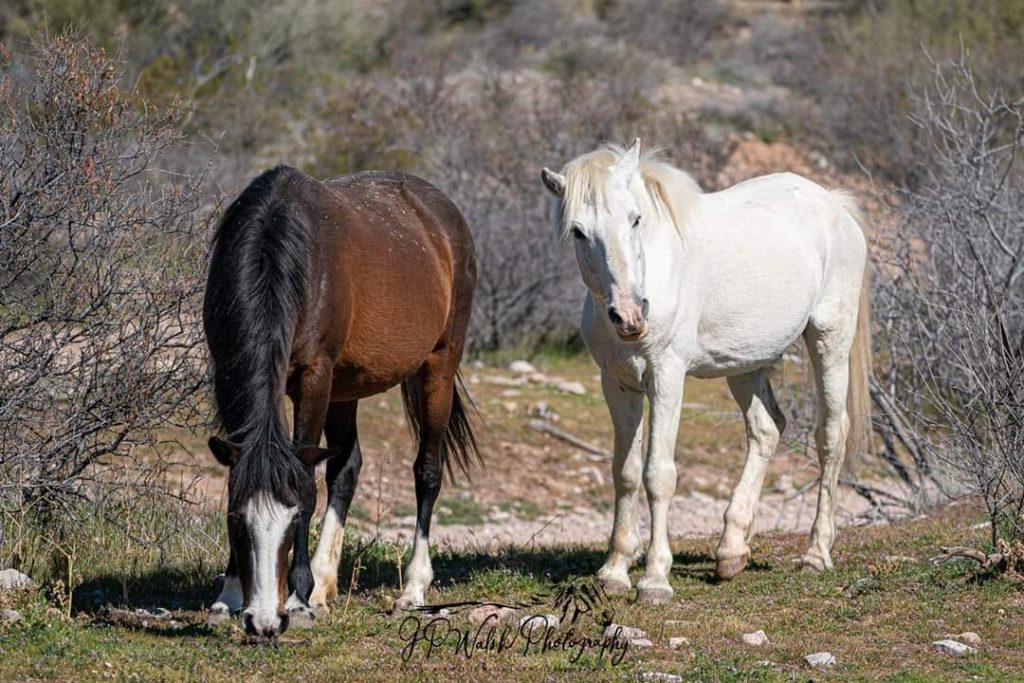
The spread and END of a Strangles outbreak in the Salt River herd
ALL CLEAR!
A Strangles (Streptococcus Equi) outbreak started in July of 2019, which was discovered and confirmed in August 2019. It has affected a total of 49 Salt River wild horses, mostly the very young and the very old. We monitored each new case closely and quickly established that each new case healed in an average time span of 3 to 4 weeks. There have been no deaths as a result of strangles, even the very young foals recovered quickly.
All cases of strangles start out with fever symptoms and a loss of appetite and subsequent weight loss. Abscesses ranged from very minor under the chin to large swellings. After the abscesses break, the horses start to feel better and healing time is usually 2 weeks after that. It takes a little longer for them to gain all of the weight back.
The first outbreak of strangles appeared around the area of Sheep’s Crossing and Road 2.2 and the second outbreak several months later in the Coon Bluff area, in the Tonto National Forest. SRWHMG installed approved strangles warning signs on all gates to recreation areas, to warn the public.
Shadowfax in this picture has also fully recuperated. Some of you may remember that SRWHMG was blasted for not “taking him to the vet” or “paneling him in”, or worse, euthanizing him. when an abscess broke on his forehead, which made him look pretty pitiful. He was not the first case of strangles, but he was certainly the worst we have seen. His mare Sapphire never contracted the disease, even while she eats nose to nose with him every day. Shadowfax, whom we gave a little extra attention, has also gained all of his weight back and can luckily spend his old age wild and free.
It has now been 8 weeks without any sightings of new cases, and therefore we believe the disease has run it’s course and we are calling the all clear.
In total 12%, of the population contracted the disease, this includes horses that have their homeranges on the SRPMIC and FMYN reservations. The rest of the horses, much like Sapphire, seemed completely immune to it.
We would like to thank all of our hardworking SRWHMG volunteers for the documentation and diligent follow ups, and we would like to thank our governing body the AZDA for their guidance and partnership.
 Photo of the royal pair by JP Walsh Photography.
Photo of the royal pair by JP Walsh Photography.
Sincerely SRWHMG.
